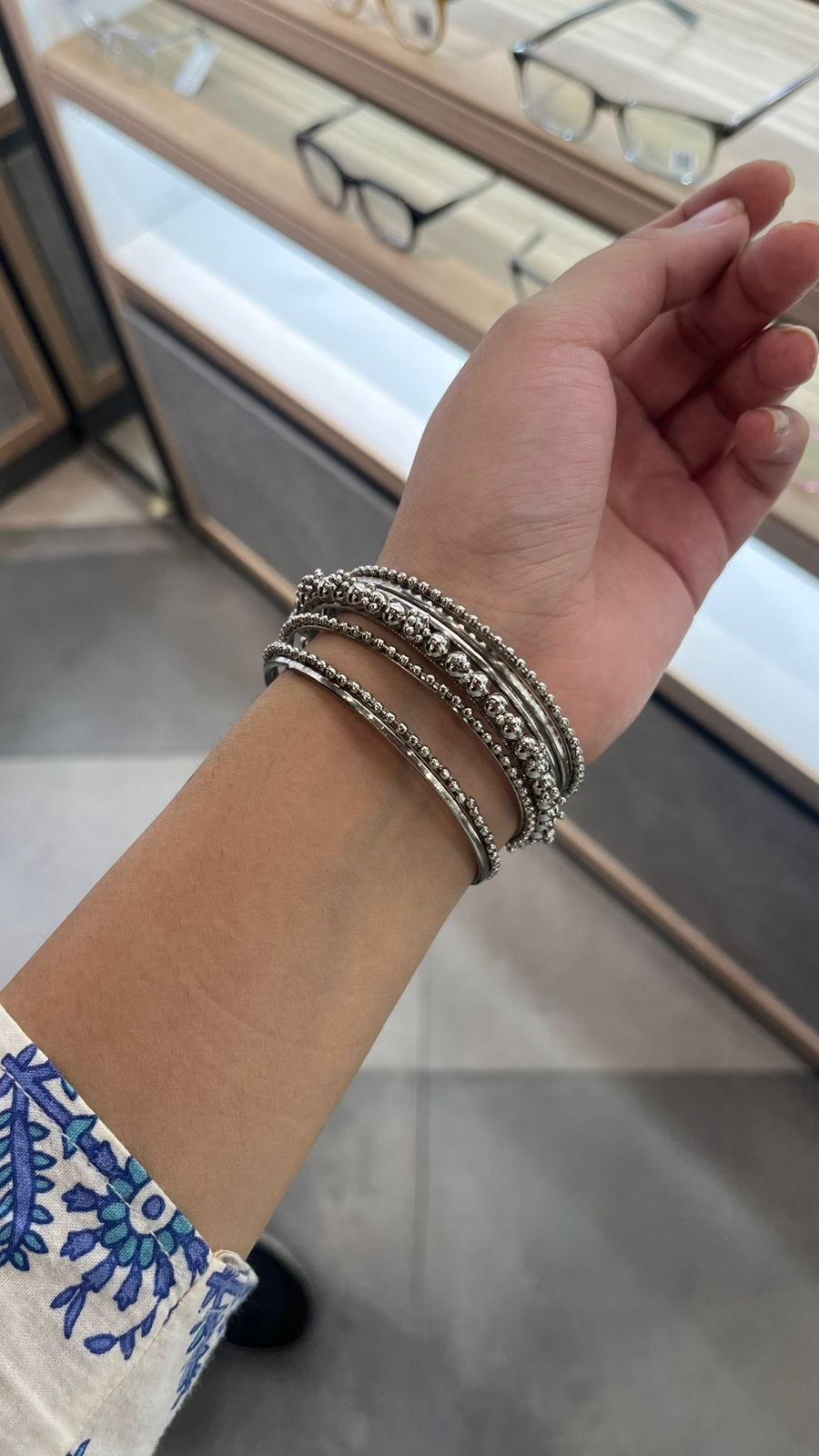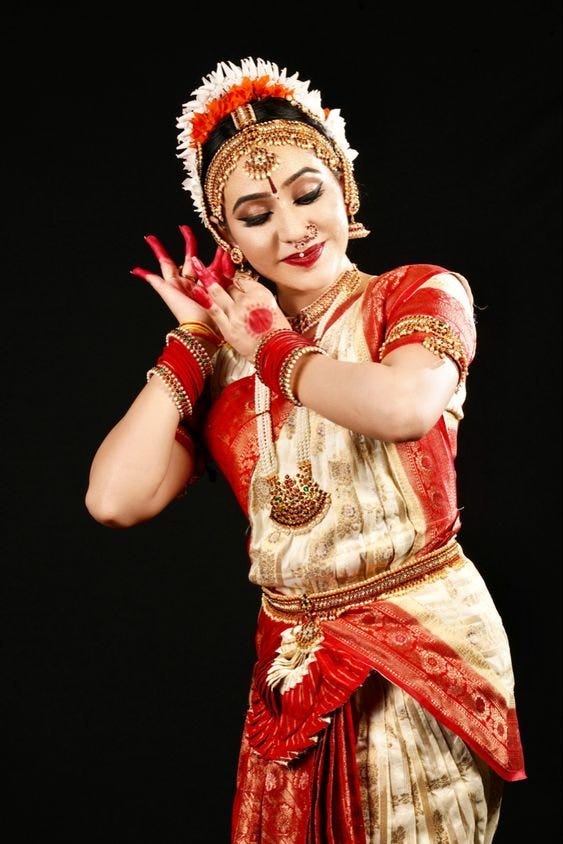Today, after ages, I wore bangles.
The last time must’ve been when I was in 9th grade.
Why did I leave them altogether?
Education.
Being inculcated into feminist thought, liberalism, and modernity, bangles were shown as symbols of bondage.
So many poems indicated women simply by the presence of bangles.
Perhaps the lineage starts from marriage — the red, bright deck adorning a bride’s arms — a prominent symbol of marital status and responsibility, and broken in case of widowhood.
In films, especially from the 80s and 90s, a woman’s bangles often broke at moments of sorrow — loss, betrayal, or husband’s death — turning a joyful ornament into a dramatic metaphor for helplessness or dependency.
Even in poetry — take Sarojini Naidu’s “The Bangle Sellers” — bangles become symbolic of life stages tied to duty and marriage:
“Some are meet for a maiden’s wrist, silver and blue as the mountain mist…
Some are for brides on their bridal morn,
…Tinkling, luminous, tender, and clear.”
It is lyrical, yes — but also reveals how tightly adornment is bound with identity roles — maiden, bride, wife.
Where is the woman, outside these roles?
Bangles, hence, in my mind conjured a character of bondage, domestication, household — largely due to films and literature that coded feminine identity through such objects.
However, today felt different.
Embracing the silver rings with textures and embossed designs gave a feminine touch to my attire and feel — but this time, on my terms.
I am one of those who shy away from much cosmetics and accessories, but somehow, bangles were loved — maybe for their novelty of wearing after long time.
And feminism?
I didn’t actually feel bonded — but liberated.
Embracing my feminine side, which had been so long closeted.
Not the one shown in movies or magazines, but the one that flows organically — through softness, elegance, beauty, and strength.
It made me reflect:
Was I abandoning oppression or expression when I stopped wearing them?
Was my rejection of bangles a true act of autonomy, or an internalised response to a modernity that viewed anything traditionally feminine with suspicion?
And, perhaps most relevant here are the thoughts of feminist philosopher Sandra Bartky, who argued that power over women today doesn’t always come in the form of laws or bans — it comes through ideals.
What we wear, how we sit, what we consider “liberating” — all shaped by invisible norms.
As Bartky noted, “femininity” is often a performance trained by society — and yet, when a woman resists that training or chooses traditional modes of expression, she is still judged.
“Modern education,” as I now see it, often enforces a new kind of conformity — where rejecting cultural adornment is seen as progress, and embracing it is viewed as weakness.
This is where my metaphor of invisible bangles truly lands: not bangles of glass, but bangles of ideology — subtle, unspoken expectations absorbed from media, academia, even from strands of activism.
So, was I really choosing to be free — or just choosing a new kind of acceptable femininity?
Abandoned by the invisible bangles imposed by ‘modern education’, I had slowly learned to despise my culture.
But in Indian aesthetics, Shringaar — adornment — isn’t just vanity.
It is rasa, emotion.
A celebration of form, feeling, and inner radiance.
Ancient texts, from the Natya Shastra to temple sculptures, view feminine beauty and its expression as powerful, divine, and deeply intentional.
In contrast, Western education — especially in its colonial form — taught that civilization meant modesty and restraint, stripping colonised women of their sensual, expressive identities.
The sari became backward. The bindi — superstition. The bangle — a burden.
Why then should bangles, kajal, lipstick, or sindoor be viewed as regression?
It is faulty, West-imposed ideals — often blind to cultural nuance — that made us doubt and discard our fashion, our adornments, our expressions.
So ladies — wear and dress as per your taste.
Power can’t be contained or defined or restrained by adornments — it is summoned from within.
Adornment doesn’t weaken agency — it can amplify it.
Try wearing a saree with bold lipstick, a nose ring, and more.
Not to please anyone. Not for approval.
But because you want to.
So ladies — don’t let (faulty) education rob you of your fashion.
Sometimes, reclaiming an old ritual is the most radical act of liberation.







